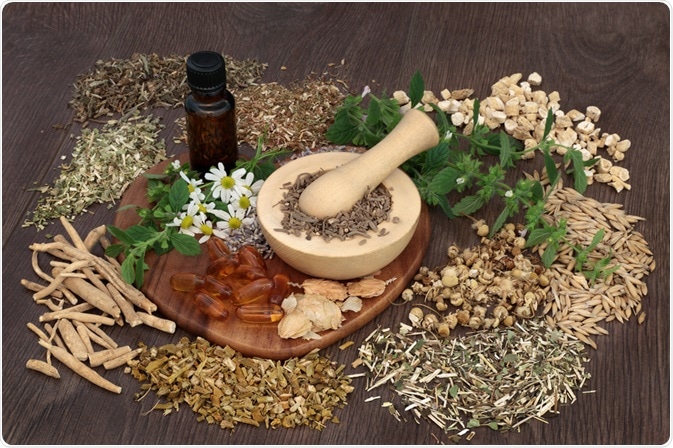See This Report on Herbalife
:max_bytes(150000):strip_icc()/VWH_Illustration_10-Healing-Herbs-With-Medicinal-Benefits_Illustrator_Mira-Norian_Title_Final-47ce13013375448c9e8e7e8c21fb50f7.jpg)
In 1990, expense connected with "different" treatment in the United States was estimated to be US$ 13.7 billion. In Australia, copyright, and the United Kingdom, annual expense on typical medication is approximated to be US$ 80 million, US$ 1 billion, and US$ 2.3 billion, respectively.
The overall commercial worth of the ethnobotanicals market can not be ignored. In 1995, the overall turn over of nonprescription-bound natural medications in drug stores was equivalent to virtually 30% of the complete turn over of nonprescription-bound medicines in Germany, and in the United States, the yearly retail sales of organic products was approximated to be US$ 5 - herbalife.1 billion.
Herbalife - Truths
In China, the total value of natural medicine produced in 1995 got to 17.6 billion Chinese yuan (around US$ 2.5 billion; Eisenberg et al. 1998; WHO 2001). This trend has proceeded, and annual revenues in Western Europe reached US$ 5 billion in 2003-2004 (De Smet 2005). In China, sales of organic products amounted to US$ 14 billion in 2005, and revenue from herbal medicines in Brazil was US$ 160 million in 2007 (World Wellness Company; http://www.who.int/topics/traditional_medicine/en/). In China, in 2003, standard herbal medications played a prominent duty in the approach to have and deal with severe intense breathing syndrome (SARS), and in Africa, a conventional natural medication, the Africa blossom, has been utilized for decades to treat losing symptoms connected with HIV (De Smet 2005; Tilburt and Kaptchuk 2008).
Natural herbs and plants can be refined and can be taken in various ways and forms, and they consist of the entire herb, teas, syrup, crucial oils, lotions, salves, massages, pills, and tablet computers which contain a ground or powdered form of a raw herb or its dried out essence. Plants and natural herbs extract differ in the solvent used for removal, temperature level, and extraction time, and consist of alcoholic removes (tinctures), vinegars (acetic acid extracts), warm water extract (tisanes), long-term steamed essence, typically origins or bark (products), and cool infusion of plants (macerates).

Around 200 years earlier, the first pharmacologically active pure compound, morphine, was produced from opium extracted from seeds cases of the poppy Papaver somniferum. This exploration showed that drugs from plants can be cleansed and administered in precise does no matter the source or age of the material (Rousseaux and Schachter 2003; Hartmann 2007).
Some Known Incorrect Statements About Herbalife
With this continued trend, products from plants and natural resources (such as fungis and aquatic microorganisms) or analogs motivated by them have added significantly to the commercial medicine preparations today. Instances include antibiotics (e.g., penicillin, erythromycin); the cardiac stimulant digoxin from foxglove (Digitalis purpurea); salicylic acid, a forerunner of aspirin, obtained from willow bark (Salix spp.); reserpine, an antipsychotic and antihypertensive medicine from Rauwolfia spp.; and antimalarials such as quinine from Cinchona bark and lipid-lowering representatives (e.g., lovastatin) from a fungi (Rishton 2008; Schmidt et al.
More than 60% of cancer therapies on the market or in testing are based on natural products. Of 177 medicines authorized around the world for therapy of cancer, more than 70% are based upon all-natural products or mimetics, much of which are boosted with combinatorial chemistry. Cancer therapies from plants consist of paclitaxel, isolated from the Pacific yew tree; camptothecin, acquired from the Chinese "pleased tree" Camptotheca acuminata and made use of to prepare irinotecan and topotecan; and combretastatin, acquired from the South African bush willow (Brower 2008.
In between 2005 and 2007, 13 medications acquired from natural items were accepted in the United States., last access: November 5, 2010).
Some Ideas on Herbalife You Need To Know
In the United States, the National Center for Corresponding and Natural Medicine at the National Institutes of Health spent about US$ 33 million on organic medications in the 2005; in 2004, the National Canadian Institute committed nearly US$ 89 million for studying a variety of typical treatments. While this range of financial investment is reduced contrasted to the complete study and growth expenses of the pharmaceutical market, it nonetheless reflects genuine public, industry, and governmental interest in this location (Li and Vederas 2009). With remarkable development in the interest in and use traditional medications worldwide, 2 primary areas of worry emerge that bring significant difficulties.

Comments on “Some Known Questions About Herbalife.”